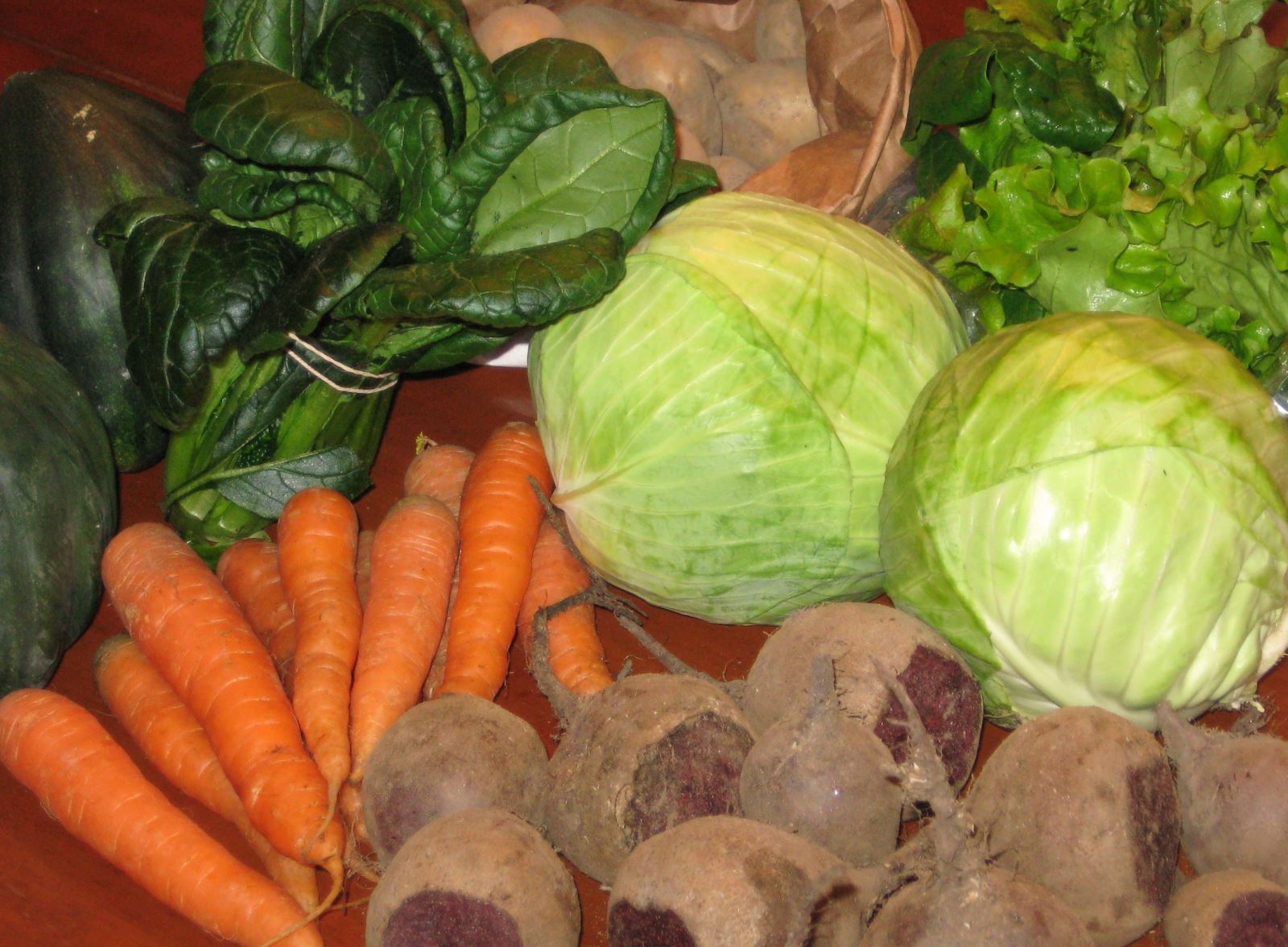With hundreds of farms and thousands of diners who want to eat more locally grown foods, west Georgia is ripe for the farm-to-chef movement. Sweeping the country from California to upstate New York, this idea is increasingly popular with chefs, farmers and diners.
Here’s how it works: Chefs try to buy more food from local farmers. This brings fresh ingredients to restaurants at reasonable prices, while putting dollars back into the local community. It also results in seasonal menus that highlight local foods as they are being harvested — from beets and potatoes in the winter to tomatoes and cucumbers in the summer.
“The interest in local food is growing, and part of what we are trying to do is really promote that,” said Gina Brandenburg, program manager for Tanner Health System’s Get Healthy, Live Well initiative.
 For both individual health — think fresh fruit and vegetables —and the regional economy, local food just makes good sense. People typically enjoy the taste of farm-fresh produce, which is a great part of a nutritious diet. Meanwhile, supporting local farmers benefits the economy because it re-invests dollars into area businesses, diver sifies the marketplace, strengthens jobs and enhances regional tax revenues.
For both individual health — think fresh fruit and vegetables —and the regional economy, local food just makes good sense. People typically enjoy the taste of farm-fresh produce, which is a great part of a nutritious diet. Meanwhile, supporting local farmers benefits the economy because it re-invests dollars into area businesses, diver sifies the marketplace, strengthens jobs and enhances regional tax revenues.
Because it’s such a win-win scenario, Get Healthy, Live Well formed the West Georgia Regional Food System Collaborative to focus on connecting farmers and chefs while raising awareness about local foods.
Farm-to-Chef Networking Day
On Nov. 11, Get Healthy, Live Well and the West Georgia Regional Food Systems Collaborative organized “Farm to Chef Networking Day.” Local farmers and chefs gathered to discuss and brainstorm ways for farmers to better reach the local marketplace of chefs, caterers and food service directors.
“The goal of the meeting was to try to figure out a way to make local food more accessible,” said participant Glenn Barnett, executive chef at Sunset Hills Country Club.
Farmers and chefs did some rounds of “speed dating” to get to know each other better. The chefs and farmers rotated around to meet one another and talk about which foods they’re looking to purchase or what products they have available during each season. Some farmers even brought samples to taste.
“A lot of the chefs had never had the chance to meet with the local farmers to see what they can purchase from them,” Brandenburg said. “We are trying to help make those connections.”
Sunset Hills Country Club also recently hosted an event focused on local foods. The club held a wine dinner for members and invited area farmers to talk about local food initiatives, said Barnett. Participants included Gum Creek Farms, Crager/Hager Farm and artisan meat producer Pine Street Market.
Chefs say buying more local foods is an attractive and tasty opportunity. “There is more variety of produce, it’s fresher and the quality is so much better,” Barnett said.
Making the Farm-to-Chef Connection Work
Logistics–like transportation and distribution– can be a big challenge for small farmers. Many local farmers currently sell the majority of their products to restaurants in the greater Atlanta area, which has a larger demand for organic foods. The Turnip Truck, an independent distributor of farm-fresh produce and other local specialties, facilitates this relationship by bringing products from west Georgia to Atlanta.
It could be tough for local farmers to shift gears and make multiple smaller deliveries on their own to restaurants across west Georgia. So members of the West Georgia Regional Food Systems Collaborative are working together to brainstorm ideas for logistics and delivery.
“Many local restaurants are smaller and they don’t need to order a lot at one time, so you could spend a lot of time delivering to them,” said Bryan Hager, co-owner of Crager/Hager Farm in northern Carroll County.
When Barnett was a chef in Vinings, he was part of a group of chefs who cooperatively ordered local foods from Georgia Grown based on which products were available each week. Buying cooperatively could work in west Georgia, too. Barnett says it would be very helpful if chefs could collaborate with farmers as they plan their menus.
“We’d like to be able to see what is available for purchase without going to the Cotton Mill Farmers’ Market on Saturday because with the amount of people we serve we could wipe out their whole supply,” Barnett said.
In addition to being a new sales outlet, restaurants serving homegrown foods can also become a marketing tool for local farmers, said Hager. “To the extent that restaurants use local foods, it shows people how to use local foods and might encourage them to come to the farmers’ market and buy some,” said Hager. “When they see our name on the menu, that’s a great marketing tool.
Consumers are increasingly aware of the benefits of buying local. “It’s fresher and it’s going to last longer because it was just picked,” said Burke. “The lettuce at the grocery store had to get picked, packaged, shipped to a distribution center and then to your grocery, so it could be weeks between when it’s picked and actually on your store shelf.”
To get involved in the farm-to-chef initiatives, please contact Gina Brandenburg at 770.836.9282 or gbrandenburg@tanner.org.